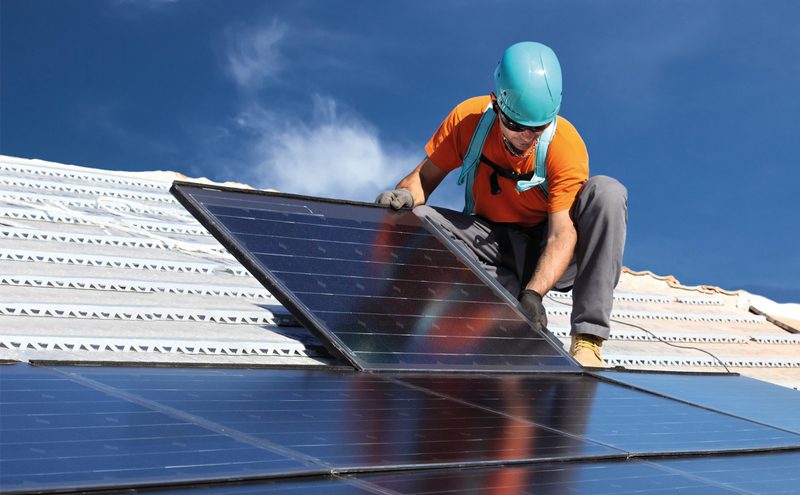A new report on UK housing stock and its readiness for climate change has presented a bracing assessment. Commentators were quick to offer opinions, including the Solar Trade Association (STA)
The independent advisory body the Committee on Climate Change (CCC), issued the report in February titled “UK Housing: Fit for the Future?” It provided “a stark warning about the need to act right now to improve energy efficiency in, and reduce carbon emissions from, the UK’s homes”, in the words of Tom Thackray, CBI Energy and Infrastructure Director.
The Solar Trade Association seemed to welcome the report, concurring that it is undeniable that the standard of homes (existing and new) must be significantly improved to achieve energy efficiency and low carbon targets. However, the Association was understandably “concerned by the exclusion of solar technologies from the report.”
The omission is particularly surprising, said the STA, given the Government’s Grand Challenge Building Mission, as set out in the Industrial Strategy, which includes unregulated energy (such as plug-in appliances and devices), that accounts for 40-50% of total buildings energy use, as well as regulated energy that is usually included in building regulations (heating, hot water, pumps fans and fixed lighting). Achieving this mission of halving energy use from buildings cannot be met without onsite power generation.
The STA said that proven, onsite solar technologies are already widely used to help deliver zero carbon buildings across the UK and in countries around the world today.
STA Chief Executive Chris Hewett said; “We couldn’t agree more with the CCC’s conclusion that Britain’s housing stock is currently unfit to meet the challenge of climate change. The UK urgently needs to introduce higher national buildings standards and a robust retrofit programme, which should ideally be targeted at homes in fuel poverty.
However, it is important that the huge role of solar technologies in meeting this challenge is duly recognised, given the weight of evidence and applied experience. Both solar PV and solar thermal are a natural fit with the decarbonisation of our building stock. They are affordable, popular, proven and easy to maintain. They can also support the performance of other energy-saving technologies as well as the development of the smart grid.
While the role of solar PV is elsewhere widely recognised, said the STA, the group added that “we hope the CCC will also share our concern about the collapse in the UK solar thermal market. However much we improve the thermal efficiency of homes, buildings will still need hot water and solar thermal can also complement the performance of technologies like heat pumps. Current policies are unfortunately failing to encourage the take-up of renewable heating technologies at anything like the rate needed.”
“Academic analysis of approaches to delivering near Zero Energy Buildings across Europe underlines the central role of solar PV and solar thermal, in all types of climate. The UK now has over 900,000 homes with solar PV and over 200,000 with solar thermal. Building standards by leading local authorities and by the Governments of London and Scotland have already proved successful at delivering lower carbon buildings, making good use of solar technologies. Analysis by the STA shows that a balance of improved buildings efficiency and PV can deliver cost-optimal decarbonisation.”






